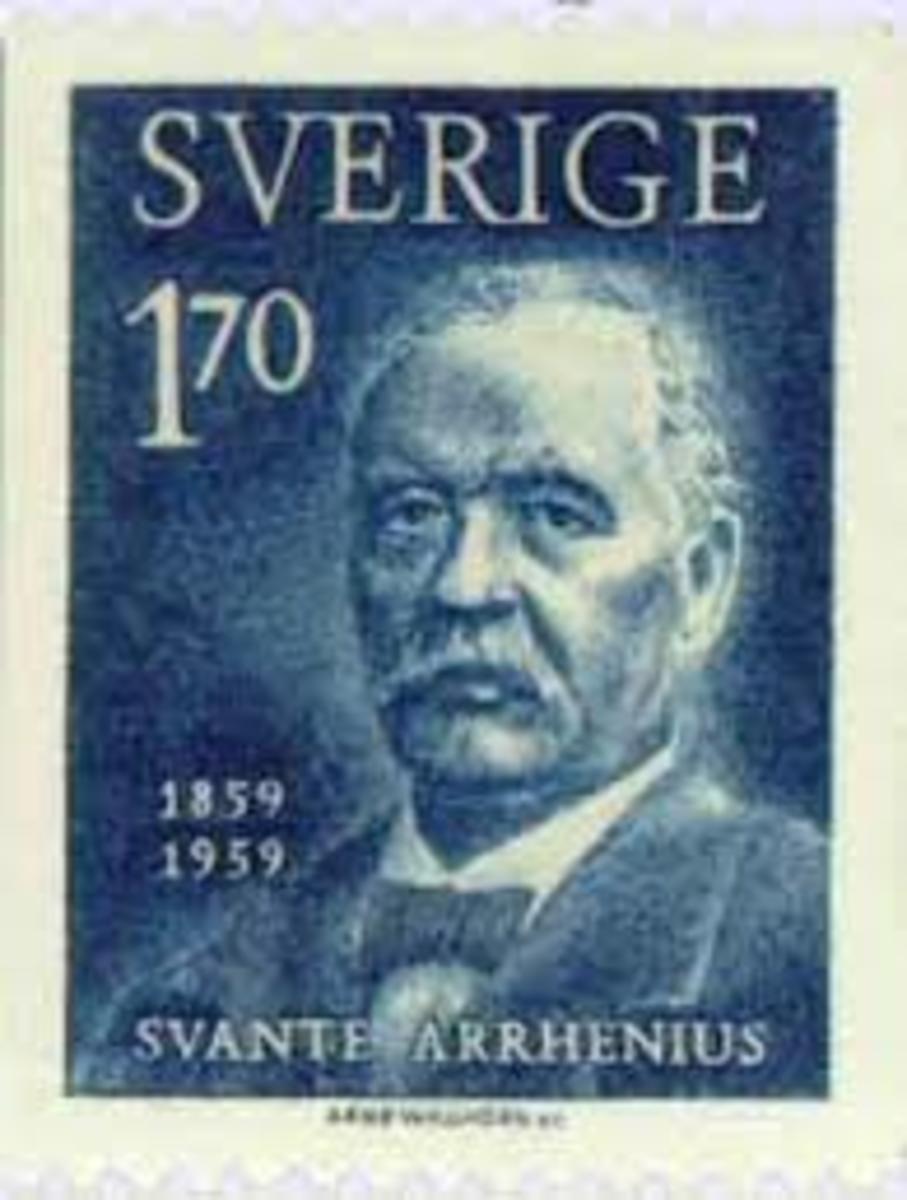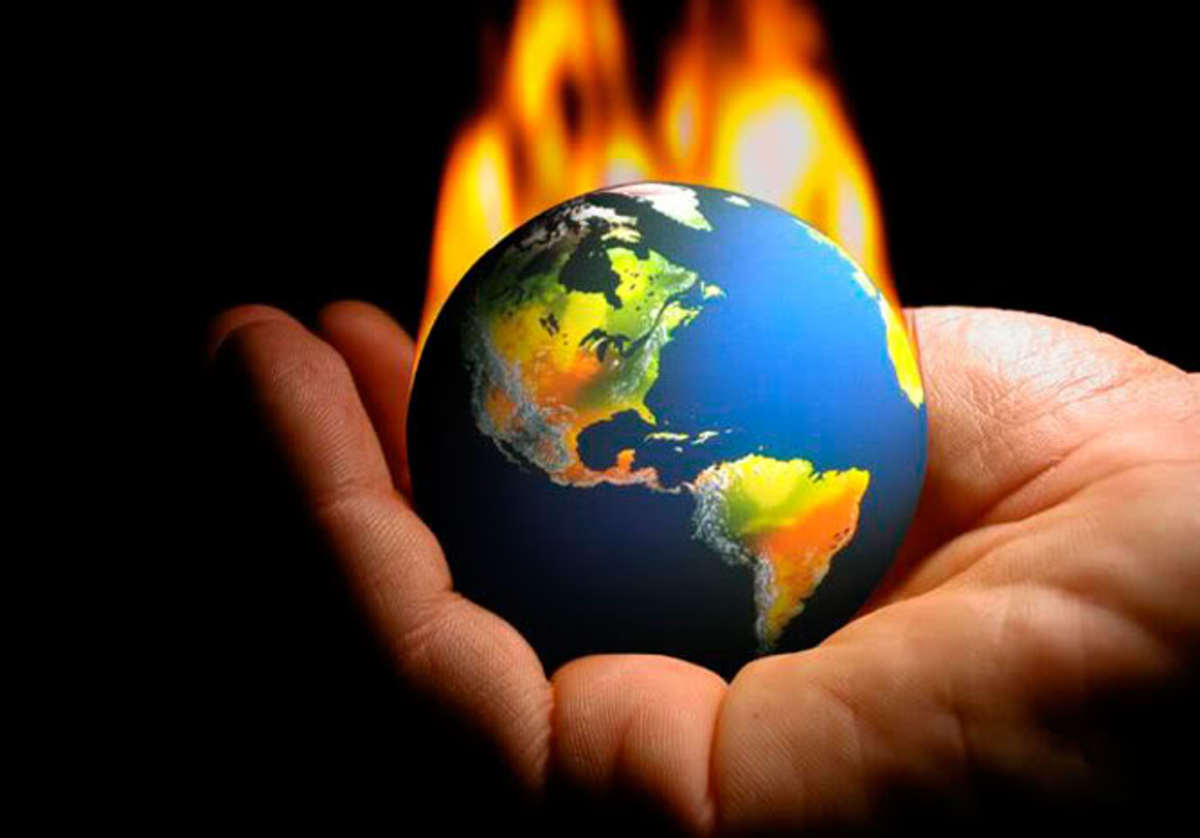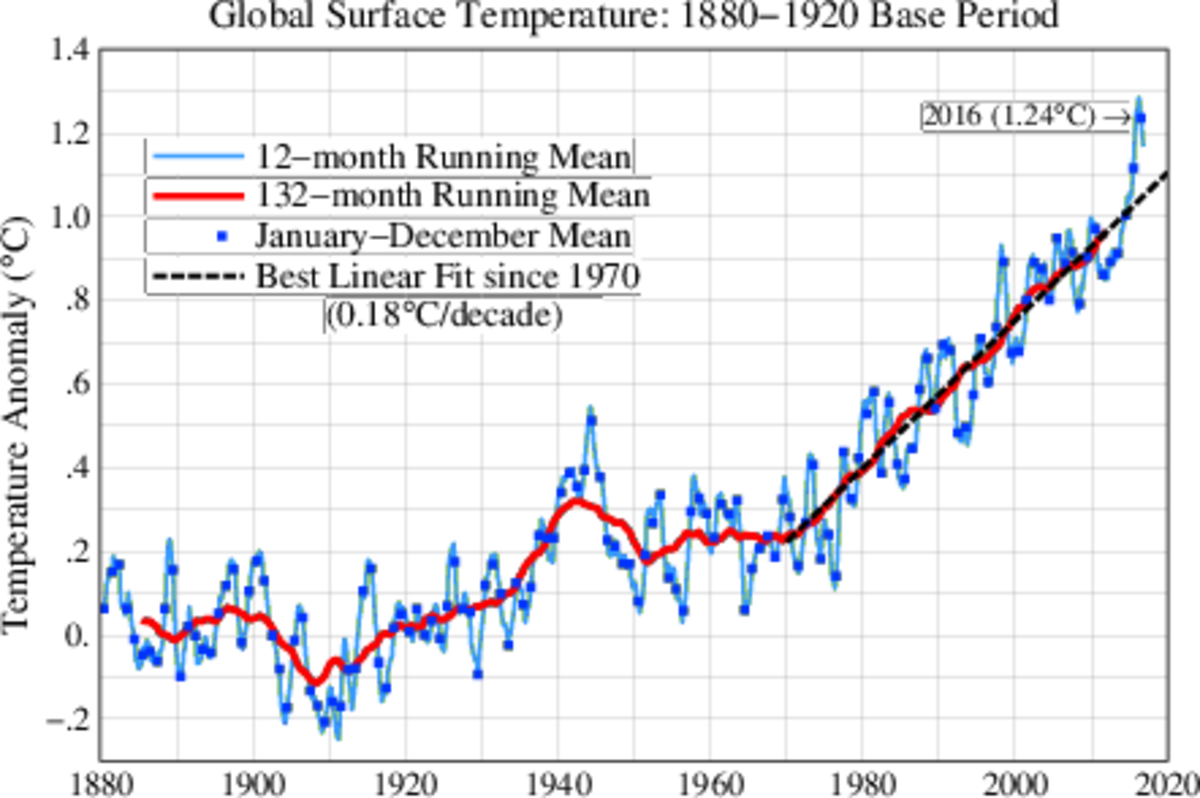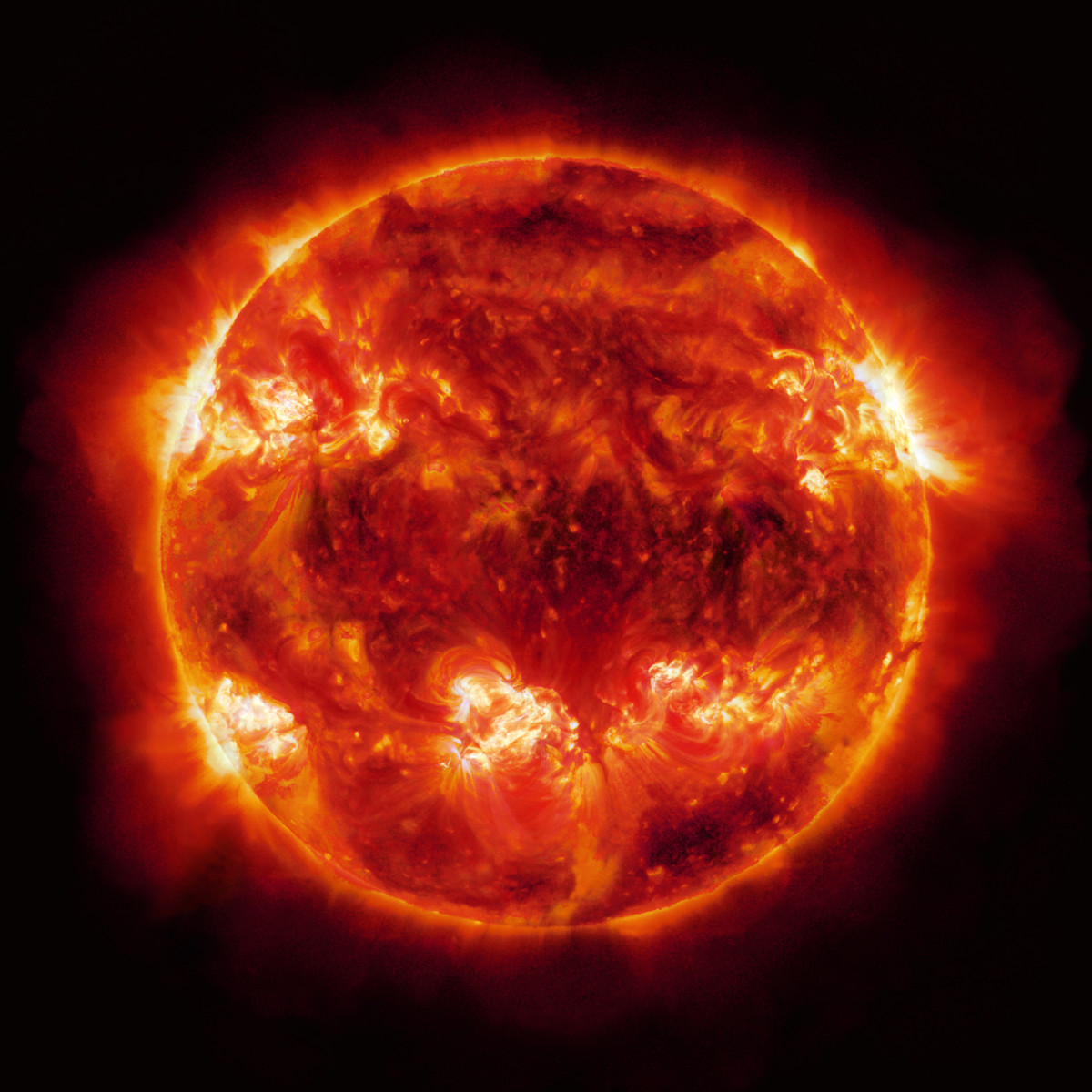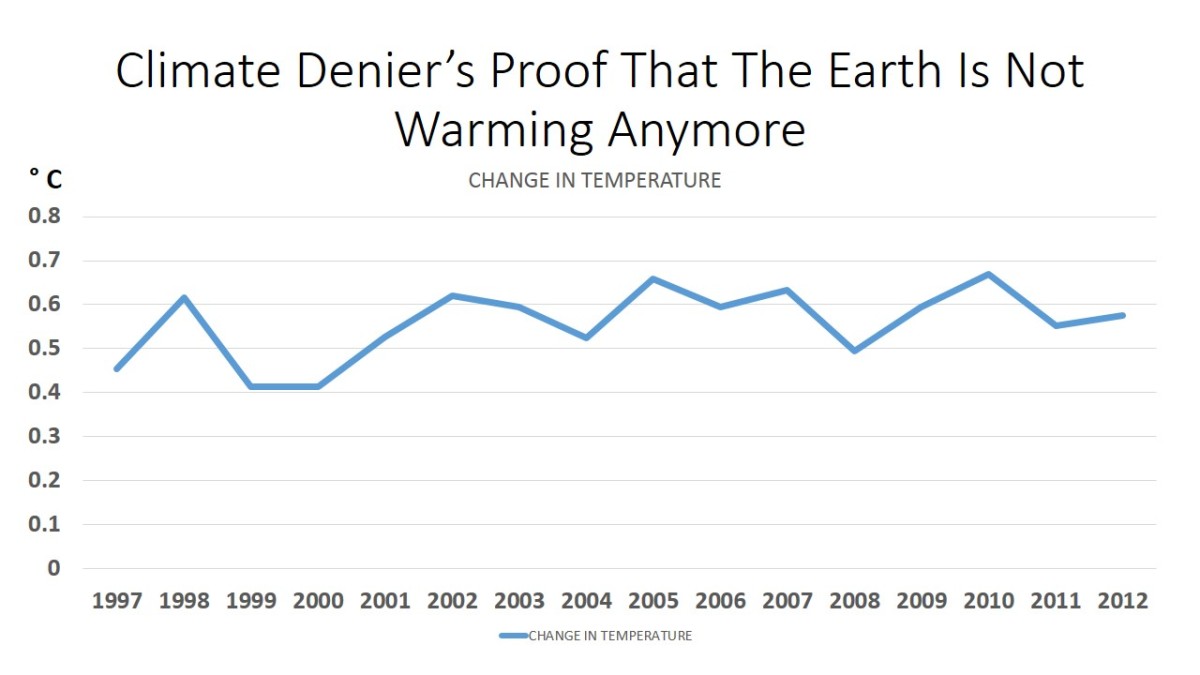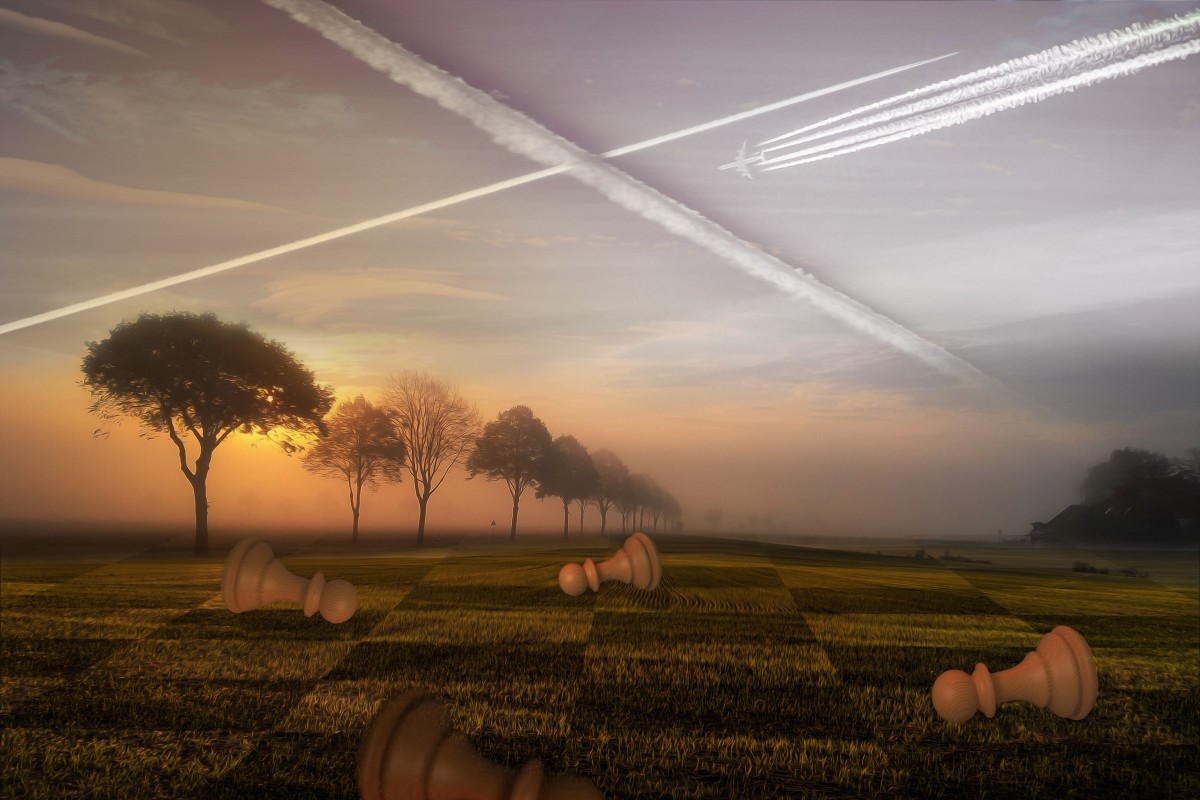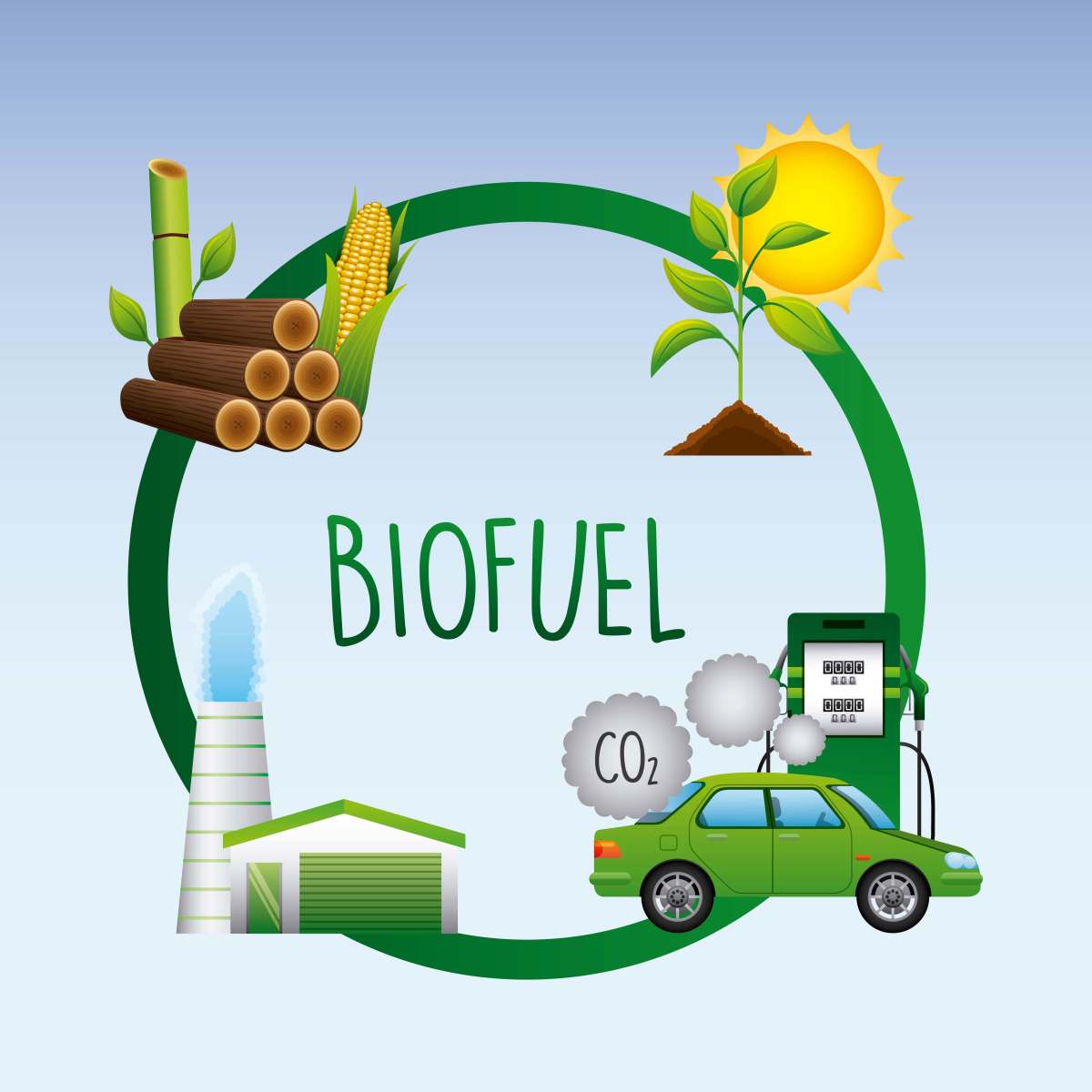Climate Change and Global Warming - What They Mean for Us
Not so long ago, just 50 years to be exact, my father was posted at Poona, then a small Army cantonment town four hours away from the mind-numbing madness of the big city of Bombay. Poona is now Pune and Bombay has become Mumbai. But those are not the only changes time has wrought. More insidious things have happened.
Poona was at that time designated as a non-fan station by the Indian Army. Although the government was quite happy to give an officer a nice, palatial bungalow to live in, electric fans were not part of the deal. Fans were not required as the climate hovered around a salubrious mid-20s Celsius (75OF) throughout the year.
Fast forward to 2009. The bungalows have been replaced by pokey flats fitted with fans and air conditioners. Gone are the spacious rooms with thick walls and high ceilings. Gone are the open spaces and the huge tamarind trees on whose branches we sat, reveling in the naughty, sweet and sour taste of their produce. In their place we have many more people, many more cars, much more concrete. And need I add, more fans and air conditioners. Summer temperatures routinely cross 40OC (104OF). The future is here already. And the forecasts? All point to a worsening of the scenario.
In discussing some of the key issues involved, my hope is that as concerned citizens of the world, we will be enthused about taking some action, big or small, once we realize the enormity of the possible consequences of inaction.
Defining Climate Change and Global Warming
There is a cause and effect relationship between these two terms that are used interchangeably. Climate change (especially that attributable to human activity) is contributing to global warming, and our awareness of this phenomenon is the key to understanding what is happening to our environment.
Climate Change
Climate changes have been occurring ever since the Earth came into existence, sometimes dramatically such as after a meteor impact, at other times more subtly such as that dictated by the sun’s energy output which follows an eleven year cycle. Volcanic eruptions are also responsible. These eruptions, somewhat surprisingly and contrary to logical expectation, cause a cooling effect which lasts only a few years.
The important thing is that climate change also occurs, and increasingly so, because of human intervention. A large percentage of the world’s scientists believe that human activity in the 10,000 years of its existence is responsible for an unexpectedly large increase in the Earth’s surface temperatures. This is the effect known as global warming.
Global Warming
In the hundred years of the twentieth century, global air temperatures rose 0.74OC (33OF). In the subsequent hundred and ten years between 1990 and 2100, the rise is expected to be 1.1 to 6.4OC (34 to 43.5OF). Some scientists prefer the expression “global heating” as they feel “warming” is too mild and does not reflect the true state of affairs.
New research at the Massachusetts Institute of Technology in the USA points to a 90% chance that temperatures could rise as much as 3.5 to 7.4OC (38.3 to 45.3OF). Two factors which seem to account for this upward revision are the swift economic growth in developing nations, especially in China and India, and the limited ability of the Earth’s oceans to absorb excessive carbon emissions.
To understand these two terms and the relationship between them, it is necessary to look at the greenhouse effect.
The Natural Greenhouse Effect
Water vapour, carbon dioxide, methane and nitrous oxide – the so-called greenhouse gases (GHGs) in the Earth’s atmosphere - create a natural “greenhouse effect” by “trapping” heat between the Earth’s surface and the Troposphere (the atmospheric layer 5 to 10 miles above the surface). This heat is radiated back to the Earth. If this did not happen, the Earth would be a cold place with temperatures around 0OC (-32OF) instead of the current average of 14OC (57OF).
The Greenhouse Effect Created by Man
We are intrinsically acquisitive animals. In pursuit of a “better” life-style, we have burnt fossil fuels such as coal, oil and natural gas to such an extent that the concentration of carbon dioxide in the atmosphere has increased from between 170 to 300 ppm (parts per million) to 385 ppm currently. This is the highest in the last 800,000 years. Additionally, the concentration of methane and nitrous oxide has also gone up substantially. The net effect is that the Earth is warming up more than it would have without our presence.
How Serious Is the Issue?
When 35,000 people die because of excessive heat, as happened in Europe in 2003, you have to believe it is serious. Had there been no increase in GHGs attributable to man, the probability of such a heat wave would have been four times lower.
Listen to people like Sir David King, Chief Scientific Adviser to the British Government. Speaking at an International Science meeting in February 2004, he said “In my view, climate change is the most severe problem that we are facing today – more serious even than the threat of terrorism.” Many qualified people who have no axe to grind either way believe the same.
What Is Causing Global Warming?
There is consensus that global warming is taking place. There are differences of opinion on why this is happening and how much is because of human activity. Heavyweights like the Intergovernmental Panel on Climate Change (IPCC) and the US Global Change Research Program (USGCRP) believe the single most important factor is GHG emissions created by man. The other major reason is deforestation - again man's doing.
Greenhouse Gases
The pie chart below shows that carbon dioxide, methane and nitrous oxide contribute 99% of GHGs. Over 50% of carbon dioxide emissions are caused by burning coal to run thermal power stations and cement plants, and by burning gasoline as automobile fuel. This apart, carbon dioxide in the atmosphere lasts for thousands of years.
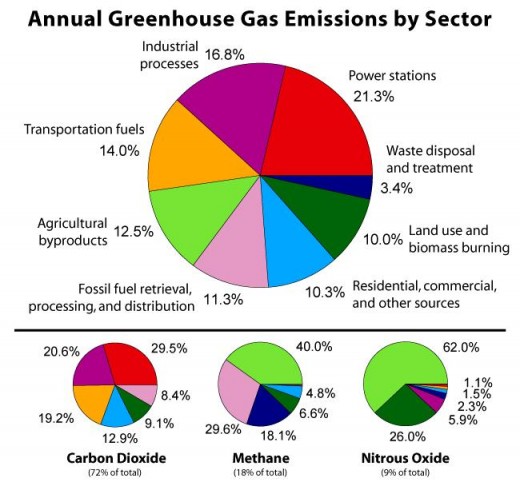
Nearly 70% of methane emissions come from livestock farming, energy exploration and large dams. Sewage and decomposing garbage in landfills add to the emitted methane.
Methane is about 21 times a more effective global warmer than carbon dioxide. The good news if any is that methane’s longevity in the atmosphere is just 12 years compared with the thousands of years carbon dioxide takes to disappear. Another piece of good news is that methane can itself be used as fuel for power stations.
Approximately 90% of nitrous oxide is released into the atmosphere from nitrogen fertilizer production and nylon products manufacturing.
Deforestation
Another major factor in global warming is deforestation. It is estimated that 20% of carbon dioxide emissions are the result of green forest cover decimation.
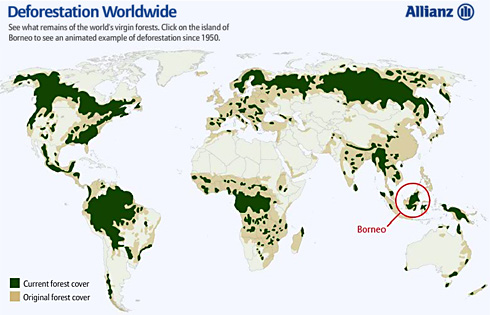
A glance at the map shows how forests have been ravaged to make way for human settlements, industry, highways, farming and to meet other human needs. This is especially marked across Asia, Europe and Africa. Forests absorb carbon dioxide during the process of photosynthesis. Trees also increase cloudiness by evaporating water into the atmosphere. Every year, forest cover equal to the area of Great Britain is lost because of mindless greed and the insatiability of human need.
Indians from Xingu National Park Brazil – Forests Cleared for Farming
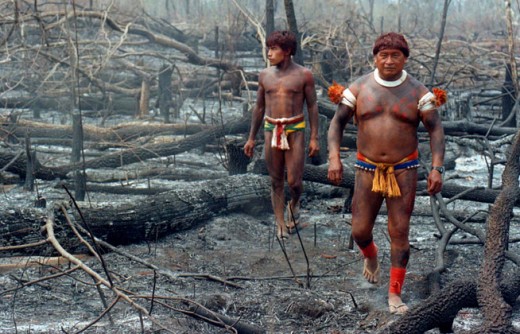
How Aware Are We?
Let me relate the apocryphal story of a frog. If you throw a frog into hot water, it will have a heart attack and die. But if you put it into tepid water which is in the process of being heated, it will make no attempt to jump out. It remains oblivious to the fact that the water is getting hotter and it may be roasted alive. Or more appropriately, boiled alive.
So it is with most of us. We still see global warming as something far and away. It is not going to affect us or our children, we think, and see little beyond that. We need to realize there is a “tipping point” beyond which the changes caused by higher temperatures become irreversible. Some of these points are closer than we think, ten years or less by some estimates.
Something to Think about - the US, China and India
I think we tend to underplay the impact China is already having on world affairs, and which India will have fairly soon. Prices of goods are being increasingly dictated by what is happening in China. Has domestic demand for a particular product in China gone up? Well, expect that product to become more expensive. So what they say about a global village is all too true.
As the Chinese and Indian economies continue to grow, estimates of global warming are also being revised upwards. But are they being changed sufficiently? Let’s look at some figures for automobiles. For every 1,000 citizens, there are 750 motor vehicles on the roads in the US compared to 8 in China. If China were to reach the US ratio, the Chinese would happily consume the world’s entire oil output - and its cars would emit as much carbon dioxide as the whole world does today. Does that say something? Of course this is not going to happen tomorrow, but it may just happen faster than we think, especially in a country with a totalitarian regime accountable only to itself.
Envision a scenario in which one of every three human beings (which is what the combined population of China and India represent), consumes as much of the Earth’s resources as the average American does today. Just give it a thought.
The Good Guys and the Bad Guys
In any challenge of this scale, there will invariably be heroes and villains. There will also be shades of grey among the black and white.
My Heroes of the On-going War on Global Warming
Al Gore
To me, the champion of champions. The former Vice-President of the USA and joint Nobel Peace Prize winner in 2007 (along with the IPCC) has successfully re-engineered himself by taking up the cause of one of our world’s most potentially destructive issues. His untiring efforts in taking on powerful lobbies like the coal and cement industries make him a true hero. Log on to his website www.climatecrisis.net to see the trailer of the video An Inconvenient Truth.
Professor Tim Flannery
I attended an inspiring presentation by this handsome, well-spoken Professor from Down Under a few months ago. This spurred my desire to research and write this Hub. The Australian is well-informed and passionate in his beliefs. His book The Weather Makers details why global warming is happening and what needs to be done.

George Monbiot
A reporter with the Guardian newspaper, Monbiot wrote Heat: How to Stop the Planet from Burning in 2006. He focuses on the importance of achieving a 90% cut on GHG emissions by 2030 and argues in favour of revolutionary methods of building construction, transportation and air travel to combat the warming.
Bashunto Jana
Bashunto is unknown and unsung. At age 81, this once proud owner of 85 acres of land on Lochachara Island in the Sunderbans Delta in Eastern India now has one acre of land on a nearby island. Lochachara’s sorrowful claim to fame is that it is the first inhabited island in the world to be washed off the face of the Earth by rising sea levels. Bashunto’s one acre may also soon be gone as that island itself is under threat of submersion. To people like Bashunto, global warming is not something waiting to happen. It has already happened. He has to be my hero for not giving up on life and for accepting his sad reality in silence.
The Oceans
Almost half of the carbon dioxide produced by man since the Industrial Revolution has been absorbed by the oceans. This has slowed global warming. Unfortunately it has also slowed the growth of coral, plankton and other marine creatures at the bottom of the food chain. As carbon dioxide is acidic, the surface waters of the oceans could become more acidic than ever before in five million years, reducing the capacity of shell-forming species to form shells and affecting the marine food chain.
The carbon dioxide stored in oceans is presently about one-third of what the oceans can take. This limitation is another pressing reason to cut carbon dioxide emissions.
Soot
Awareness of soot as a potential warmer is so recent that it was not even mentioned in the summary report of 2007 of the Intergovernmental Panel on Climate Change (IPCC). Black carbon, as it is otherwise called, is emitted by cooking stoves in the villages of developing nations. Some recent reports say it could be contributing as much as 18% towards warming, second highest after carbon dioxide.
Soot particles absorb the sun’s heat and melt the ice when they settle on glaciers. They also make snow less white, thereby reducing its effectiveness in radiating the sun’s heat back into space. Its longevity in the atmosphere is just a few weeks. Changing over to low-soot stoves can be a short-term solution to reduce global warming till other measures kick in. Human health problems related to the use of black carbon will also reduce.
Rudolph Giuliani
I was disappointed to see the erstwhile hero of 9/11 turn villain as his law firm lobbies against the American Clean Energy and Security (ACES) Bill in the USA. He says “We have to increase reliance on coal” for reasons that need not be stated. I haven’t heard greater trash in a long while.
The Coal Industry, the Automobile Industry, Cement Production and Thermal Power Stations – Responsible for Carbon Dioxide Emission
Nearly 80% of carbon dioxide emissions come from these sources. It is estimated that 244 billion metric tonnes of carbon dioxide have already been emitted by man into the atmosphere.
The coal industry recently spent US $ 250 million on a TV campaign for clean coal – which Al Gore promptly called an oxymoron. These are immensely strong lobbies with deep pockets and should not be underestimated, especially in the less developed economies where money easily buys power and influence.
One positive effect of burning coal is the formation of sulfate aerosol particles which help in reflecting incoming sunlight away from the earth.
Large Dams and Livestock – Responsible for Methane Gas Emission
One study shows that the world’s 52,000 large dams contribute more than 4% of the warming effect. Indian dams are the worst, contributing 28% followed by Brazil with 18%. Methane is produced by the trees and plants which have been submerged by the dam waters and is released when the water passes through the turbines of hydro-electric power stations.
Where it is large dams in India, it is sheep in New Zealand that contribute nearly 50% of that country’s equivalent carbon dioxide emissions. The world’s 1.3 billion cattle population, 1 billion sheep, 1 billion pigs, 17 billion chicken and 800 million goats are handsome methane emitters. A cow emits something like 250 to 500 litres of methane every day from both ends – an indelicate burp being unable to expel the quantity produced.
If that was not enough, scientists have discovered that millions of tonnes of methane lie buried beneath the Arctic ice. As this ice thins, methane is beginning to bubble up to the surface.
The United States of America – an Over-consuming, Wasteful Society
The figures speak for themselves:
- Global carbon emissions are 7 billion tones, approx. 1 tonne per person per year. The average American generates 10 tonnes per year.
- The average American generates more than 10 times the GHG as the average Chinese.
- The 5% of the world’s population living in the USA contributes 20% of carbon dioxide emissions and consumes 30% of the world’s resources.
- The carbon footprint (CF) and ecological footprint (EF) of Americans are the highest in the world. The average American’s carbon footprint is 20 tonnes carbon dioxide per annum compared to 1.1 tonnes for the average Indian. So even considering that there are three times more Indians than Americans, the figures are still revealing.
- In 2003, the ecological footprint for the average American was 9.6 hectare (ha) compared to 5.6 ha for the average Britisher / Frenchman, 1.6ha for the Chinese and 0.8 ha for the average Indian.
Simply put, the CF is the amount of GHG produced by a person or an organization measured in units of carbon dioxide. Thus the kind of car you drive, the number of air miles you clock, and the electricity you consume at home are some factors that count towards your CF. The website www.safeclimate.net/calculator will work out your value.
The ecological footprint (EF) is a broader concept and estimates how much land and water are needed to produce all the resources an individual consumes and to dispose off all the waste and pollution created. A comprehensive EF calculatoris available online at http://www.earthday.net/footprint/index.asp.
To be fair, the US House of Representatives has on 29 June 2009, passed the ACES Act 2009 (HR 2454). This will now go before the Senate. Essentially, this Act aims to reduce global warming in the US by 83% below present levels by 2050. The Act will also reduce dependence on fossil fuels and help build clean and renewable energy sources.
The real question is – is enough being done soon enough by those who are part of the problem?
Ozone in the Troposphere
Ozone is both the good guy and the bad guy, like soot (also called black carbon or aerosols). Ozone in the stratosphere protects earth from radiation (otherwise we would all be fried double quick) but in the troposphere it becomes a GHG, adding to the woes created by carbon dioxide, methane and nitrous oxide.
How Will Global Warming Affect Us – Three Key Changes
Rise in Sea Levels
This is probably the most important indicator of global warming as it comes from only two occurrences - glacial melt and the expansion of ocean water as it warms. The major ice sheets on Greenland and Antarctica are melting. If the Greenland sheet alone were to melt completely, it would lead to a sea level rise of 20 feet (6 meters). In the coming centuries, sea levels may rise by as much as 65 feet (20 meters) leading to submergence of 40% of land area.
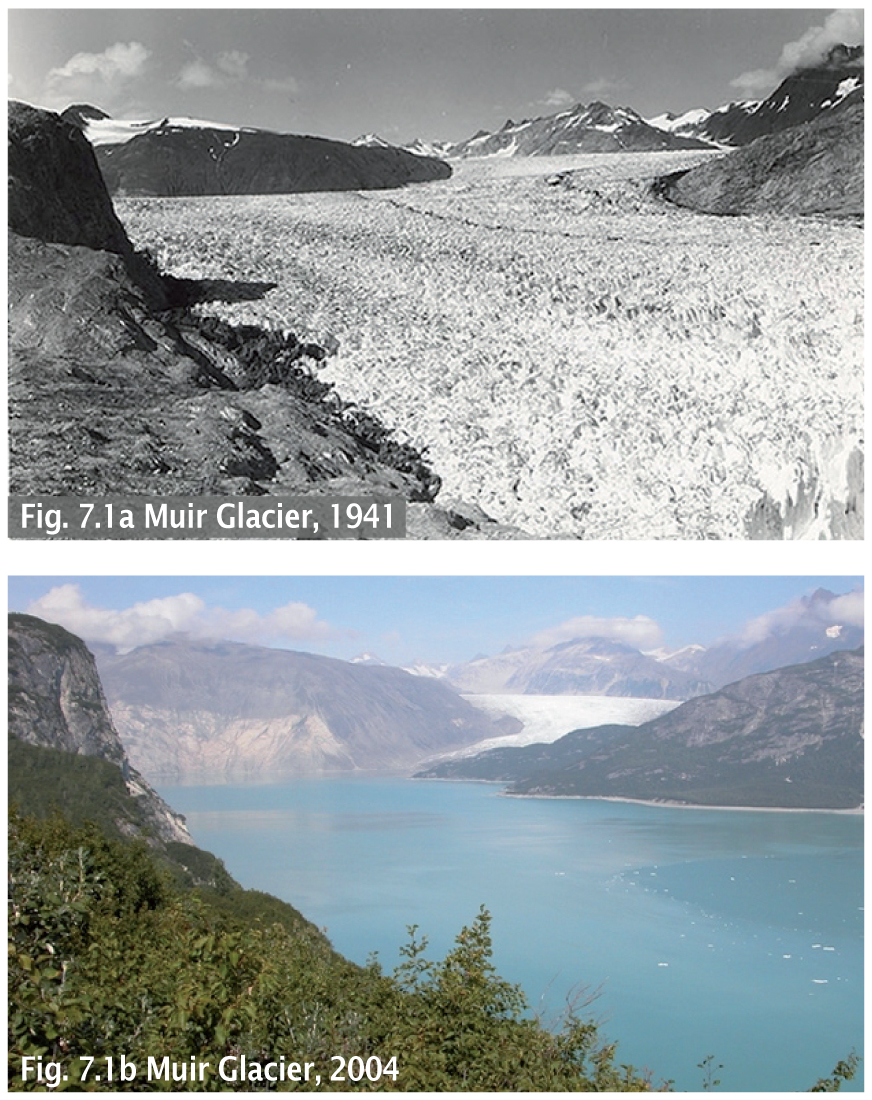
Recent research shows that there is more than a 90% chance that sea level rise along the North-eastern coast of the USA (including New York City), would be nearly 18 inches (nearly 450mm) - twice the mean global sea level increase by 2100. Likewise, many coastal cities including Sydney, Tokyo and Kolkata, as well as low-lying regions in Bangladesh, Florida and the Netherlands among others would be under dire threat from the rising waters.
Manhattan Under an 8 metre Wave
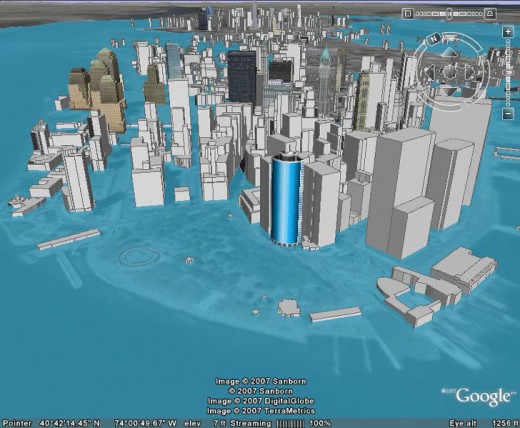
In the Sunderbans delta of Eastern India, 70,000 people and 400 Royal Bengal Tigers are already at risk.
The Royal Bengal Tiger
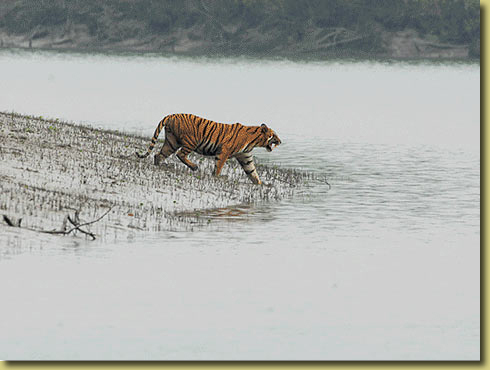
Species Extinction
A study released in 2004 showed that of 1,100 species studied in six regions around the world, more than one-third may go extinct if temperatures rise between 1.5 and 2.5OC over those reported in 1990. If this ratio proves correct, over one million of the 4 to 6 million known plant and animal species would perish because of warming.
Among the threatened are the snow leopard, the polar bear, emperor penguins and birds like the sea plover that nest on sea beaches. Species that are dependent on cold climes or nearness to the sea will have to move upwards in terms of altitude or northwards in terms of latitude in order to survive.
The Snow Leopard
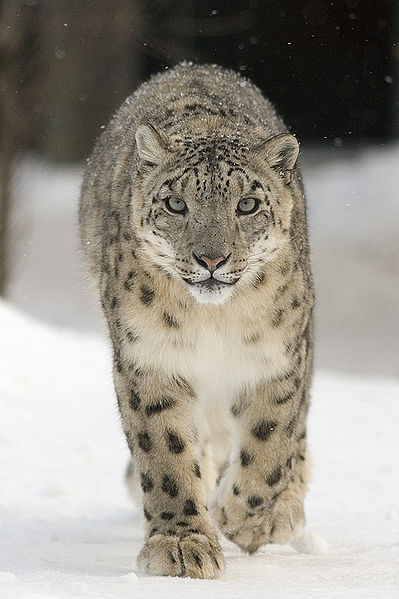
The endangered Polar Bear
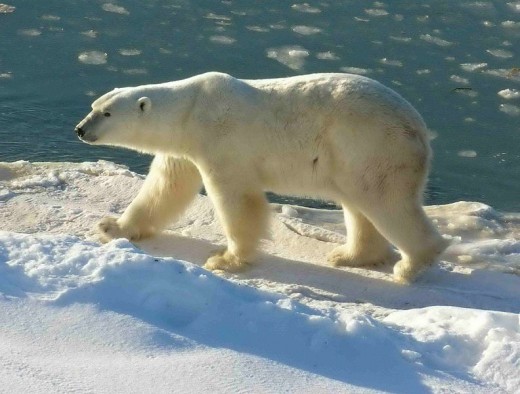
The Extinct Dodo
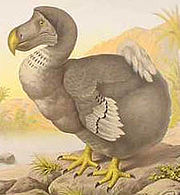
Over 112 species of amphibians have vanished since 1980, the major reason being rising temperatures that have allowed the growth of a fungus that kills frogs by attacking their skin and teeth and releasing a poison. Species lost include the golden toad.
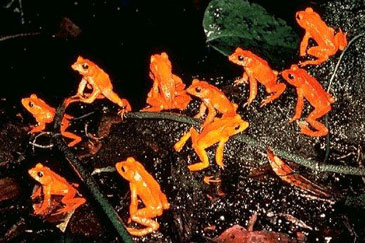
The natural world faces potential catastrophe because of the combined effect of global warming and habitat destruction. Unlike a General Motors which can still arise Phoenix-like from its ashes, a species once lost, is lost forever.
Higher temperatures are affecting flora and fauna across the world, from coral reefs in the Caribbean, which serve as fish nurseries, to rhododendrons in South Africa., which cannot move to a cooler climate.
Extreme Weather
Many of us are witness to increasingly “freak” occurrences like floods, storms, drought and other extreme weather events. They will not be called freak much longer.
Take a look at just four random days in July 2009. Between 6 July and 9 July, some of the weather events reported across the globe:
- Landslides and floods in Vietnam. 22 killed – Associated Press, 6 July
- Benin declares state of emergency over floods – Reuters, 7 July
- Storm sparks 20 B.C. forest fires – CBC News, 7 July
- Floods force evacuations for some Wilmington residents – News 14, 7 July
- Rains kill 21, leave 700,000 homeless in China – Xinhua, 7 July
- Heavy rains cause flooding in Charleston and Dorchester County – NBC News, 8 July
- A downpour causes havoc in Gomoa West – Ghana News, 8 July
- Parched Mumbai prays for rains to fill supply lakes – Reuters, 9 July
- Heavy rains temporarily closing many Mass. Beaches – Boston Globe, 9 July
Retreat of the Glaciers
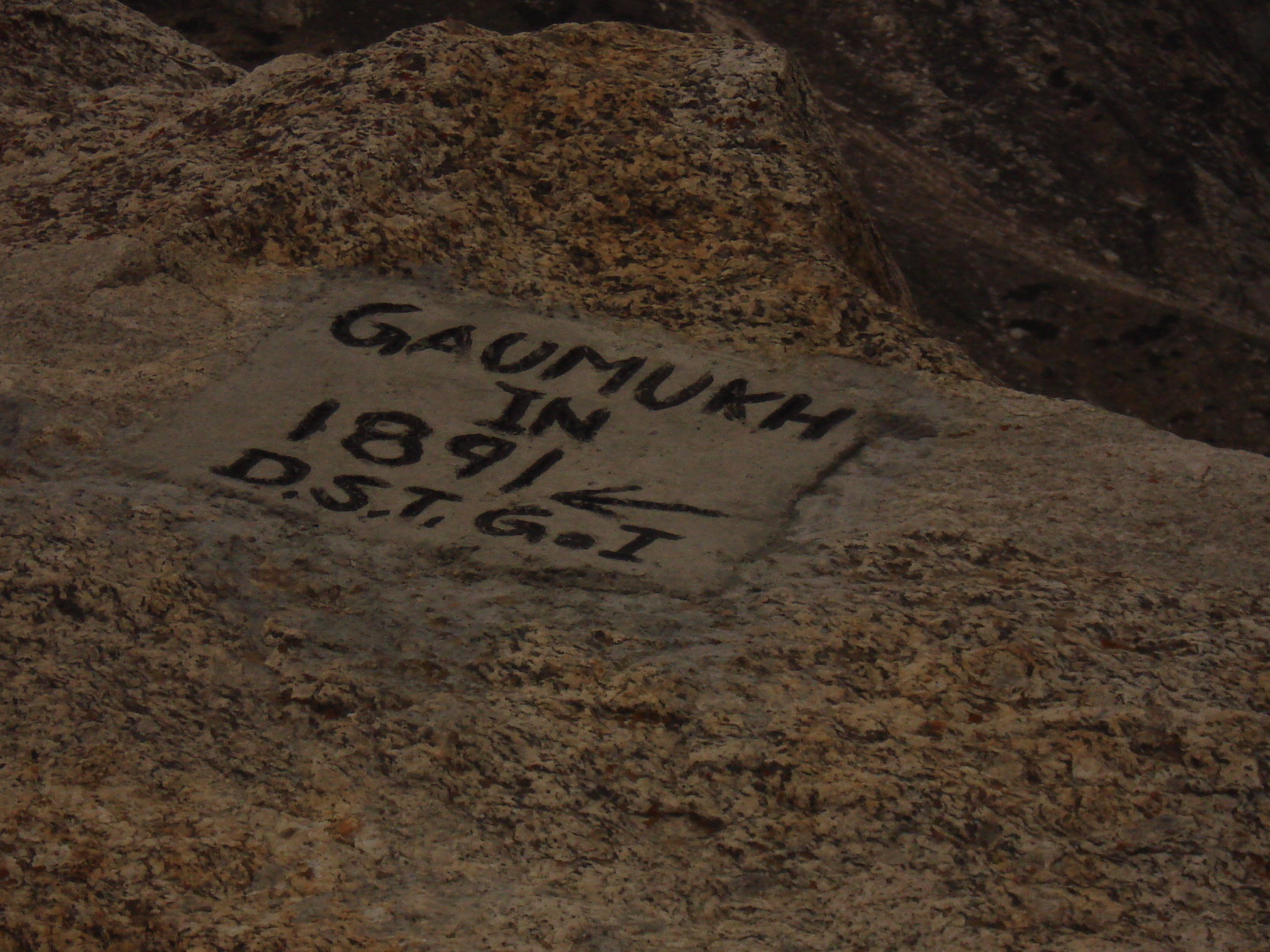
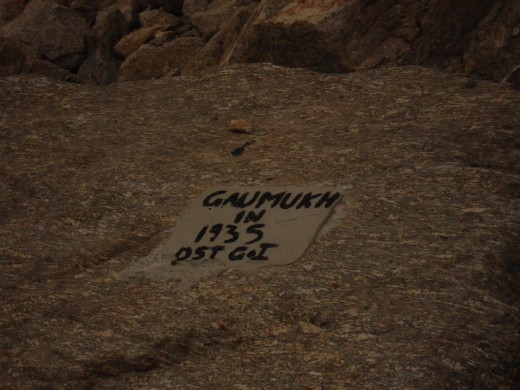
Listen to One of the World’s Glaciers – the Gangotri Glacier in the Garhwal Himalayas, India
One year ago, I trekked up the Garhwal Himalayas to the Gangotri Glacier, from where one of India’s holiest rivers, the Ganges, emerges. What struck me most were the signs in the rocks which indicated where the Gaumukh (or Cow’s Mouth – the source of the Ganges) was in 1871 and later in 1935.
Standing at 12,000 feet (3700 metres), I realized that in less than 75 years, the glacier had receded some 2 kilometres and was now visible far in the distance. And this glacier provided the melt water to feed 500 million of my countrymen. Were we and the rest of mankind not going grossly wrong somewhere?
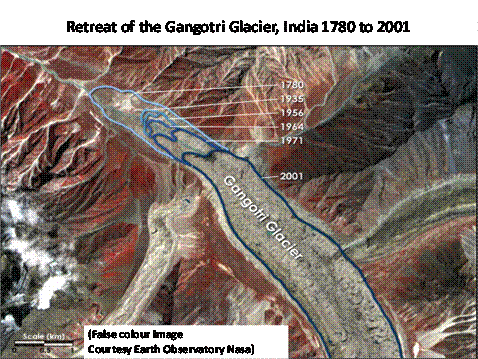
So What Can We Do about It?
Small Things, Big Things
You and I will never be Supermen or Superwomen. But we can be real-life heroes just by doing some small things and a few big things. Among the small things:
- Shop for products made from recycled materials and reusable energy. Products with the Energy Star label are already on the market. A bigger market for eco-friendly products would set alarm bells ringing among those manufacturers who continue to tax the Earth. Perhaps it is time for Ralph Nader to rise again.
- Use less water – simply by closing the tap while shaving so that it does not just drain away. Attend to water leakages urgently.
- Save electricity. Use compact fluorescent light bulbs (CFLs) and solar panels. There are issues regarding disposal of mercury in the CFLs. It is useful to know that coal-fired power stations produce even more mercury.

- Switch from plastic to reusable cloth bags. Use washable mugs not plastic ones. Every year over 60 billion Tonnes of plastic is produced, of which less than 5% is recycled. Where does the rest end up? It goes into the oceans and kills bird and marine life.
- Turn off the standby buttons on your TV. Be aware that electricity is being consumed even in standby mode.
Among the big things:
- Walk and cycle more and drive less. The less we drive, the less carbon dioxide is emitted into the air.
- Switch to hybrid cars like the Toyota Prius, Honda Accord Hybrid and Civic Hybrid. Anyone notice these are all Japanese makes? The American and European manufacturers of hybrids are lagging woefully behind.
- Fight the good fight against new thermal power plants. Half of US emissions of carbon dioxideare from such plants.
- Plant trees. The target? One tree per human being.
- Start a movement to force governments to stop taxing people and start taxing waste and energy, especially from unsustainable sources like fossil fuels.
- Reduce our carbon and ecological footprints.
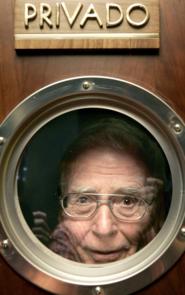
Is This the Way the World Will End, Not with a Bang but a Whimper?
Prominent among the doomsayers is a 90 year-old British scientist who is to become one of Virgin’s first space tourists later this year. Since the 1960s, James Lovelock has been writing about the dangers of global warming. In his 2006 book The Revenge of Gaia (Gaia - Greek Goddess of the Earth), Lovelock still held out hope that humanity could be saved.
Three years later, in The Vanishing Face of Gaia, he opines that the Earth has already crossed the threshold. There are just too many of us for the Earth to bear, says Lovelock. By the end of the 21st century (just 90 years away), many of the nearly 7 billion human beings living today would be history. Only a few hundred million would survive, most likely in the far Northern Hemisphere, including the UK. These survivors would adapt to the new hot state and ensure the continuation of the human species.
You may or may not agree with Lovelock. But, if we can learn to tread softly on this Earth even now, we will have done our bit in our own little way.
Quite simply, if the planet dies, we die too.
To Sally's Trove for her untiring efforts to make a writer out of me, my grateful thanks.
Books, Videos and Websites
- James Lovelock's web site - the international homepage
International home page of James Lovelock, the founding historical and cultural leader of environmentalism for environmentalists around the world - George Monbiot
Website of George Monbiot, author of "Heat: How to Stop the Planet from Burning", called by some reviewers as one of the most important books of the decade. - Al Gore's web site
Al Gore won the 2007 Nobel Peace Prize for his work on global warming. His participation has given the movement for action against man-made warming a huge fillip. - Al Gore warns on latest climate trends
Al Gore presents updated slides from around the globe to make the case that worrying climate trends are even worse than scientists predicted, and to make clear his stance on "clean coal."
Organisations
- United States Global Change Research Program
Mandated in 1990, this organisation is entrusted with the world's largest scientific investment in the research on global climate change. The Program's annual report is titled "Our Changing Planet". - Intergovernmental Panel on Climate Change
The IPCC is an intergovernmental scientific organisation under the aegis of the United Nations Environment Program (UNEP) and is responsible for the assessment of climate change. - Best Foot Forward
This British organization measures carbon footprints and ecological footprints and helps organizations to reduce their environmental impact. - Redefining Progress
Redefining Progress shifts policy toward sustainable economics and environmental justice using ecological footprints, climate plans and sustainability indicators.
Individuals
- Tim Flannery
Australian of the Year 2007, environmentalist and global warming activist, and author of "The Weathermakers", a path-breaking presentation on climate change and global warming. - James Hansen
Professor at Columbia University, head of NASA’s Goddard Institute for Space Studies, New York and climate activist arrested recently at the Coal River Mountain protest meeting.

